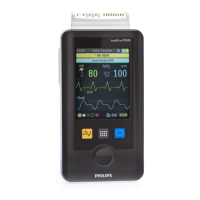Frequency Management and Channel Selection
Installation 2-17
Warning
The Smart-hopping and short-range radios operate in the 2.4 GHz band. Radio
connections are subject to interruption due to interference from other radio sources
in the vicinity, including microwaves, Bluetooth devices, and DECT phones. The
most likely interference will come from 802.11 b/g wireless LANs.
Smart-hopping and SRR Channel Selection for 2.4GHz Smart-
hopping Networks
If a 2.4 GHz Smart-hopping network is being deployed with the short-range radio
in a hospital with an 802.11 deployment of channels 1, 6 and 11, a number of
different deployment options are given in the table. The clearest frequencies should
be assigned to the short-range radio, and then the Smart-hopping channels can be
assigned.
So if short-range radio (SRR) channels 25 and 26 are selected, then the best Smart-
hopping channels to use would be the channels listed as "Primary" in the table,
"802.11 b/g Channel Deployment 1, 6, 11", under "Option 2". This would be Smart-
hopping channels – 13, 14, 28. Channels 42, 43, 44, 45, 46, 47 should not be used
because they will interfere with the short-range radio. In addition to these three
Smart-hopping channels, the best three channels of the "Secondary" (0 if allowed,
29) and "Tertiary" (12, 15, 27) channels listed should be selected.
Using the diagram again, short-range radio channels 25 and 26 operate above
802.11 channel 11. This leaves the frequencies between 802.11 channels 1 and 6
(Smart-hopping channels 12, 13, 14 and 15) and the frequencies between 802.11
channels 6 and 11 (27, 28 and 29) as possibilities for the Smart-hopping channels.
In these deployments, it is unlikely that all of the channels will be clear throughout
the coverage area. A frequency survey is suggested to determine the best
channels to use.
• A "clear" short range radio channel is defined as having a power level
< -80dBm.
• A "clear" Smart-hopping channel is defined as having a power level
< -90dBm.

